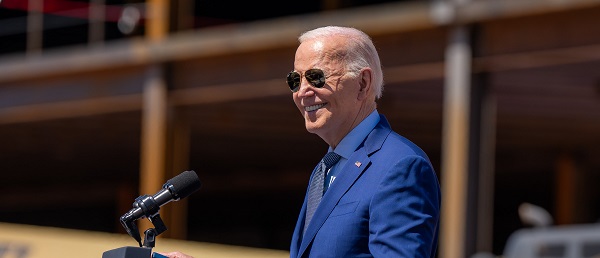Alberta
Red Deer Mayor Veer appointed Honorary Lieutenant-Colonel of 41 Signal Regiment

November 30, 2020
Mayor Veer appointed Honorary Lieutenant-Colonel with the Canadian Armed Forces
(Red Deer, Alberta) – Nominated by the Commanding Officer of 41 Signal Regiment, and signed off by the Minister of National Defence; The City of Red Deer congratulates Mayor Tara Veer on her recent appointment to Honorary Lieutenant-Colonel by the Canadian Armed Forces in recognition of her work in the community, commitment to honouring military veterans, and local reservists.
“I am extremely honoured to have been given the distinguished appointment of Honorary Lieutenant-Colonel with the Canadian Military,” said Mayor Veer. “I am eager to serve in this position, in conjunction with my public duties. The sacrifices of our Canadian Armed Forces and the many veterans that served our country are what have allowed me to serve our community as Mayor. Past and present heroes in the Canadian Armed Forces have made our country what it is today. They are the reason for the freedoms Canadians enjoy today.”
“Mayor Veer has been a dedicated supporter of local troops and I know she will bring the to same dedication to our Squadrons in Edmonton and Calgary as well. I am delighted with her appointment as Honorary Lieutenant-Colonel of 41 Signal Regiment and am excited about the enthusiasm and profile that she brings to this important role in the Canadian Army Reserve.”
Honorary Colonel Lloyd Lewis, 41 Signal Regiment
“Mayor Veer’s remarkable career and contributions to Red Deer will certainly be an inspiration to all of our soldiers with her demonstrated ‘service before self’, leadership, and boundless energy. The soldiers of 41 Signal Regiment are truly honoured to welcome Honorary Lieutenant-Colonel Veer to our ranks.”
Lieutenant-Colonel Steven Flavel, Commanding Officer, 41 Signal Regiment
Honoraries are a tradition going back more than a century in the Canadian Armed Forces. They are typically prominent private citizens who volunteer to act as advocates for their regiments, communities and guardians of regimental traditions and histories. The first Honorary Colonel appointment in Canada was that of Lieutenant-Colonel the Honorable J.M. Gibson, a Provincial Secretary in the Ontario Government. He was appointed as Honorary Lieutenant-Colonel to the 13th Battalion of Infantry in 1895.
Early in the 20th century in Canada, Sir Robert Borden described the practice of appointing Honoraries as “of greatest advantage to the Militia to be able to enlist the interest and sympathy of gentleman of position and wealth by connecting them to Regiments.”
That sentiment remains true today. The Honorary is seen to be the guardian of regimental traditions and history, promoting the regiment’s identity and ethos and being an advisor to the Commanding Officer on virtually all issues excluding operations.
“As an Honorary Lieutenant-Colonel, I will endeavor to foster ‘esprit de corps’ and support the 41 Signal Regiment and its leadership, and work to develop and strengthen the ties between our local military and communities, businesses, and industry throughout Alberta,” said Mayor Veer. “I will fulfill the responsibilities entrusted to me, which include providing a link between the local and provincial Squadrons and the community, and raise the public profile of the Regiment with utmost pride. Thank you to the Canadian Armed Forces for this honour.”
This honorary position builds upon and aligns with Mayor Veer’s role in the community as ambassador and advocate for the needs of the region.
“This is also a recognition for our community, and I share this with the people of Red Deer as I continue to advocate for the betterment of Red Deer for our citizens,” Mayor Veer continued.
The appointment is effective immediately, and is a three year term. A formal installation ceremony will be planned soon pending provincial health protocols.
41 Signal Regiment has squadrons in Red Deer, Edmonton and Calgary.
Click to learn more about the appointment process.
Click for more information about 41 Signal Regiment.
Six stories from local soldiers who have deployed internationally in the past year
Alberta
Medical regulator stops short of revoking license of Alberta doctor skeptic of COVID vaccine

From LifeSiteNews
The Democracy Fund has announced that COVID-skeptic Dr. Roger Hodkinson will retain his medical license after a successful appeal against allegations of ‘unprofessional conduct’ by the College of Physicians and Surgeons of Alberta.
A doctor who called for officials to be jailed for being complicit in the “big kill” caused by COVID measures will get to keep his medical license thanks to a ruling by a Canadian medical regulator.
The Democracy Fund (TDF) announced in an April 4 press release that one of its clients, Dr. Roger Hodkinson, will retain his medical license after filing an appeal with the College of Physicians and Surgeons of Alberta (CPSA) over allegations of “unprofessional conduct regarding 17 public statements made in November 2020 and April 2021.”
Hodkinson had routinely argued against the dictates of public health and elected officials and “presented an alternative perspective on COVID-19, including the efficacy of masking and vaccines,” TDF noted.
In 2021, Hodkinson and Dr. Dennis Modry publicly blasted the then-provincial government of Alberta under Premier Jason Kenney for “intimidating” people “into compliance” with COVID-19 lockdowns.
In 2022, Hodkinson said that leaders in Canada and throughout the world have perpetrated the “biggest kill ever in medicine’s history” by coercing people into taking the experimental COVID injections and subjecting them to lengthy lockdowns.
These statements, among others, led the CPSA to claim that Hodkinson had promoted inaccurate or misleading information. “However, following negotiations with lawyers for The Democracy Fund, the CPSA limited its claims to arguing that Dr. Hodkinson’s comments violated the ethical code and extended beyond the scope of a general pathologist.”
Thus, Hodkinson did not “concede that any of his statements were false,” but “acknowledged that his criticisms of other physicians technically breached the Code of Ethics and Professionalism,” the group explained. “He also admitted that he should have clarified that his views were outside the scope of a general pathologist.”
Instead of having his license revoked, TDF stated that Dr. Hodkinson received a “caution” and will have to “complete an online course on influence and advocacy.”
“However, he did not concede that any of his statements were misinformation, nor did the tribunal make such a determination,” noted lawyer Alan Honner.
While Hodkinson received a slap on the wrist, a number of Canadian doctors have faced much harsher sanctions for warning about the experimental vaccines or other COVID protocols such as lockdowns, including the revocation of their medical licenses, as was the case with Dr. Mark Trozzi and others.
Some of Hodkinson’s warnings seem to have been vindicated by the current Alberta government under Premier Danielle Smith, who commissioned Dr. Gary Davidson to investigate the previous administration’s handling of COVID-19.
Davidson’s report, which was made public earlier this year, recommended the immediately halt of the experimental jabs for healthy children and teenagers, citing the risks the shots pose.
Alberta
Province introducing “Patient-Focused Funding Model” to fund acute care in Alberta

Alberta’s government is introducing a new acute care funding model, increasing the accountability, efficiency and volume of high-quality surgical delivery.
Currently, the health care system is primarily funded by a single grant made to Alberta Health Services to deliver health care across the province. This grant has grown by $3.4 billion since 2018-19, and although Alberta performed about 20,000 more surgeries this past year than at that time, this is not good enough. Albertans deserve surgical wait times that don’t just marginally improve but meet the medically recommended wait times for every single patient.
With Acute Care Alberta now fully operational, Alberta’s government is implementing reforms to acute care funding through a patient-focused funding (PFF) model, also known as activity-based funding, which pays hospitals based on the services they provide.
“The current global budgeting model has no incentives to increase volume, no accountability and no cost predictability for taxpayers. By switching to an activity-based funding model, our health care system will have built-in incentives to increase volume with high quality, cost predictability for taxpayers and accountability for all providers. This approach will increase transparency, lower wait times and attract more surgeons – helping deliver better health care for all Albertans, when and where they need it.”
Activity-based funding is based on the number and type of patients treated and the complexity of their care, incentivizing efficiency and ensuring that funding is tied to the actual care provided to patients. This funding model improves transparency, ensuring care is delivered at the right time and place as multiple organizations begin providing health services across the province.
“Exploring innovative ways to allocate funding within our health care system will ensure that Albertans receive the care they need, when they need it most. I am excited to see how this new approach will enhance the delivery of health care in Alberta.”
Patient-focused, or activity-based, funding has been successfully implemented in Australia and many European nations, including Sweden and Norway, to address wait times and access to health care services, and is currently used in both British Columbia and Ontario in various ways.
“It is clear that we need a new approach to manage the costs of delivering health care while ensuring Albertans receive the care they expect and deserve. Patient-focused funding will bring greater accountability to how health care dollars are being spent while also providing an incentive for quality care.”
This transition is part of Acute Care Alberta’s mandate to oversee and arrange for the delivery of acute care services such as surgeries, a role that was historically performed by AHS. With Alberta’s government funding more surgeries than ever, setting a record with 304,595 surgeries completed in 2023-24 and with 310,000 surgeries expected to have been completed in 2024-25, it is crucial that funding models evolve to keep pace with the growing demand and complexity of services.
“With AHS transitioning to a hospital-based services provider, it’s time we are bold and begin to explore how to make our health care system more efficient and manage the cost of care on a per patient basis. The transition to a PFF model will align funding with patient care needs, based on actual service demand and patient needs, reflecting the communities they serve.”
“Covenant Health welcomes a patient-focused approach to acute care funding that drives efficiency, accountability and performance while delivering the highest quality of care and services for all Albertans. As a trusted acute care provider, this model better aligns funding with outcomes and supports our unwavering commitment to patients.”
“Patient-focused hospital financing ties funding to activity. Hospitals are paid for the services they deliver. Efficiency may improve and surgical wait times may decrease. Further, hospital managers may be more accountable towards hospital spending patterns. These features ensure that patients receive quality care of the highest value.”
Leadership at Alberta Health and Acute Care Alberta will review relevant research and the experience of other jurisdictions, engage stakeholders and define and customize patient-focused funding in the Alberta context. This working group will also identify and run a pilot to determine where and how this approach can best be applied and implemented this fiscal year.
Final recommendations will be provided to the minister of health later this year, with implementation of patient-focused funding for select procedures across the system in 2026.
-

 Podcasts8 hours ago
Podcasts8 hours agoThe world is changing – Trump’s Tariffs, the US, Canada, and the rest of the world
-

 Alberta6 hours ago
Alberta6 hours agoProvince introducing “Patient-Focused Funding Model” to fund acute care in Alberta
-

 Business19 hours ago
Business19 hours agoJury verdict against oil industry worries critics, could drive up energy costs
-

 2025 Federal Election8 hours ago
2025 Federal Election8 hours agoMark Carney Comes to B.C. and Delivers a Masterclass in Liberal Arrogance
-

 2025 Federal Election1 day ago
2025 Federal Election1 day agoLiberals Replace Candidate Embroiled in Election Interference Scandal with Board Member of School Flagged in Canada’s Election Interference Inquiry
-

 Alberta1 day ago
Alberta1 day agoIs Canada’s Federation Fair?
-

 2025 Federal Election1 day ago
2025 Federal Election1 day agoPierre Poilievre Declares War on Red Tape and Liberal Decay in Osoyoos
-

 Automotive2 days ago
Automotive2 days agoTesla Vandals Keep Running Into The Same Problem … Cameras









